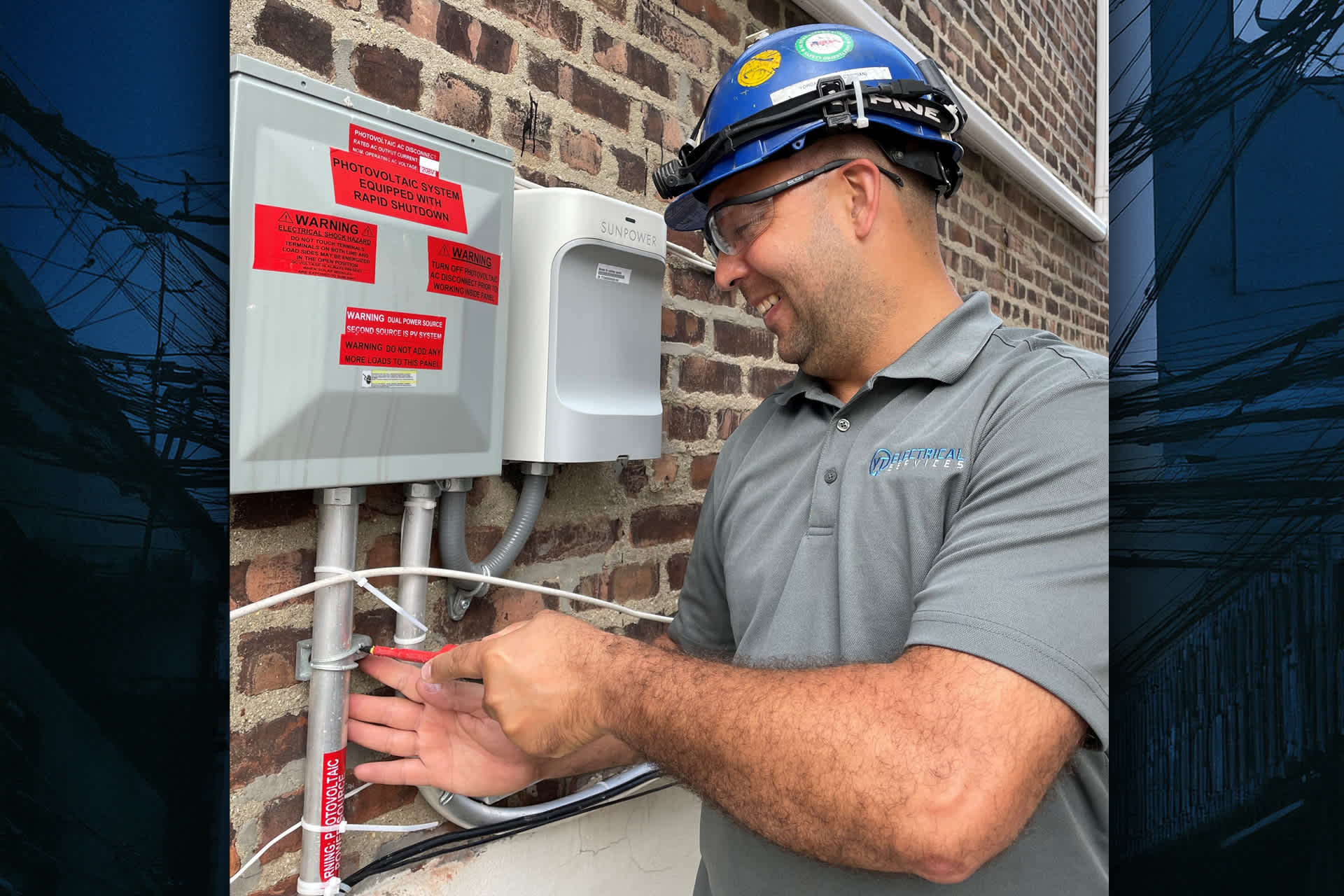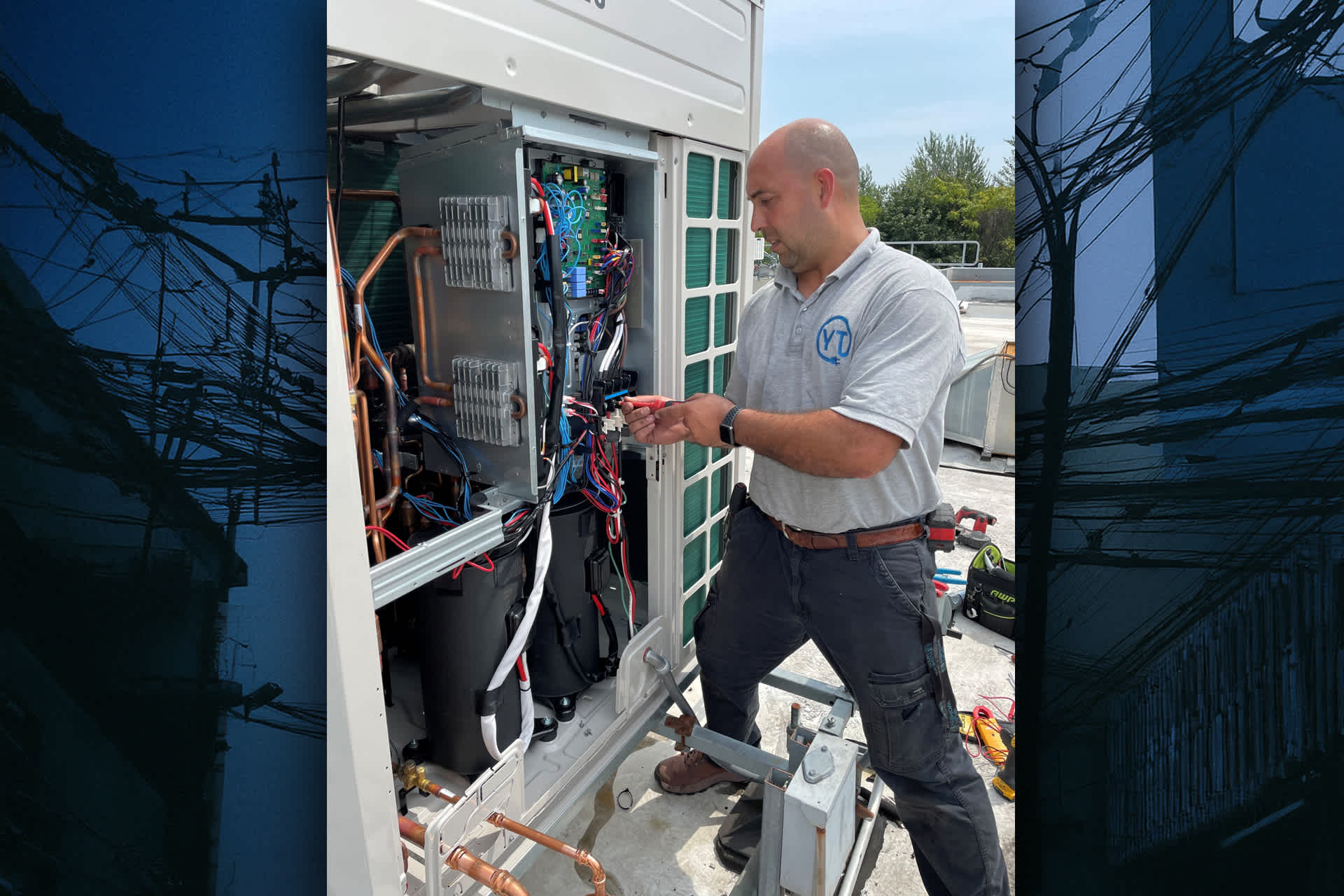Master of Electricity

All kinds of devices, from computers and TVs to elevators and traffic lights, need electricity to run. When new buildings go up, brand-new electrical systems are installed from scratch. Wires and systems that carry electricity get old, or damaged, or overloaded by all the devices people plug in. So it’s important to have an expert in all things electricity—an electrician—on hand.
Yordanys Torres is a master electrician. It’s the top rank in this trade. Torres was born in Cuba and studied electrical engineering in college. In 2007, at 26, he relocated to New York City. Starting over in a new country meant rebuilding his career from the ground up. Not long after arriving, he landed a job with an electrical contractor as an apprentice. He spent his days working alongside an experienced electrician on job sites. In the evenings, he learned the science of electricity and the ins and outs of electrical systems, including how to install and fix them.

An apprenticeship is a common path to becoming an electrician. While training, apprentices get paid for the work they do. Their employer usually covers the cost of their education. Torres completed his apprenticeship through United Service Workers Union (USWU) Local 363 in New York. The union supports and protects workers in the trade. For Torres, an apprenticeship was a game-changer: “You can become well-rounded because you know theory and the practical [side] of the field,” he told Your Hot Job.
After finishing his apprenticeship, Torres was able to apply for a license to work independently. Electricians at this stage of their careers are known as journeymen. For a time, Torres worked for the Metropolitan Transit Authority. He worked on an upgrade of New York City’s extensive subway system.
Electricians can work just about anywhere, but Torres explains that most jobs fall into one of three main categories: residential, commercial, or industrial. Residential electricians work in homes, installing and fixing things like light switches, outlets, ceiling fans, and circuit breakers. Commercial electricians focus on stores, salons, offices, and restaurants: anywhere business is done. Industrial electricians work in places like factories and power plants, where they deal with big machines.
If electricians want to level up their career, they can become master electricians, like Torres. The rules are different depending on the state, but usually, this requires several more years of experience and passing a tough exam. The exam comprises both written questions and hands-on tasks. There’s a lot of math, too. And if you want to work in more than one state, you have to get licensed in each one. Torres is licensed in New York and New Jersey.
Becoming a master electrician opened even more doors for Torres. He was able to start his own company, YT Electrical Services, and now hires other electricians to work for him. Some days, the job is pretty straightforward. Other days, it’s like solving a mystery—especially during service calls. That’s when something isn’t working and an electrician has to figure out what’s wrong before fixing it. “It’s really the most complex work in the field because you never know what you’re going to find,” Torres says.

These days, Torres is not just working as an electrician. He’s also teaching a new generation. As part of an apprenticeship program with USWU Local 363, he helps young electricians enter the field. He likes being an instructor because it keeps his skills sharp, especially when it comes to safety rules.
In New York City, electricians follow a set of rules called the New York City Electrical Code. These rules are based on a national code, but with additional rules just for the city. Many cities have their own version. These codes help prevent fires, shocks, and other accidents. The national code gets updated every three years to keep up with new technology, so electricians have to stay on top of changes. “When you are reading the book constantly, two or three times a week, you keep a lot of things fresh,” Torres says.

